The first thing you will notice when you come to Kumamoto City is Kumamoto Castle.
The impressive castle is located in central Kumamoto City and is a major symbol of Kumamoto. The castle is also called Ginkgo Castle because of the Great Ginkgo Tree near the main castle towers.
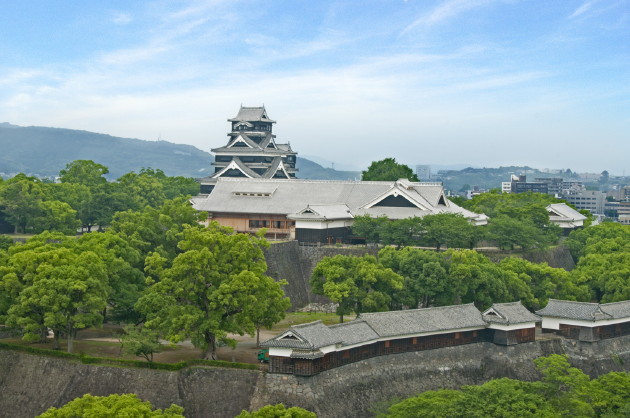
The city has prospered as the seat for the castle. One can not help but be amazed by splendour of the remains found throughout the city of the castle town, and to imagine as it once was. In fact, the castle did not fall against the enemy's attack for 52 days during the Seinan Civil War.
The castle is considered to be one of the three most famous castles in Japan, bustling with numerous tourists throughout the year.
It was constructed by Kiyomasa Kato in 1607 who spent seven long years to complete it, with a large main castle towers, 49 turrets, 18 gates with turrets and 29 castle gates.
There are total of 13 buildings such as Uto-Yagura Turret, Tago-Yagura Turret, Naga-Bei (The long Wall) and so on, and are designated by the government as important cultural properties.
Lord Tadatoshi Hosokawa moved to Kumamoto Castle in 1632 after the Kato clan divested of its lordship. The Hosokawa clan continued for 240 years.
There are some famous features of the castle.
* The Main Large Castle Tower is 6 stories high, and is about 30 meters above the stone fence. Visitors can enjoy the wonderful view of Kumamoto City from the top. The Main Small Castle Tower is 4 stories high, and is about 19 meters in height. Exhibitions and historical relics are housed in the main tower buildings.
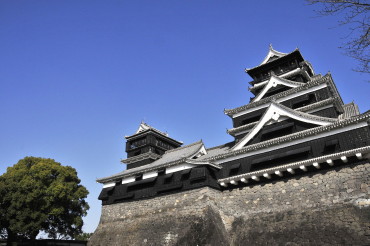
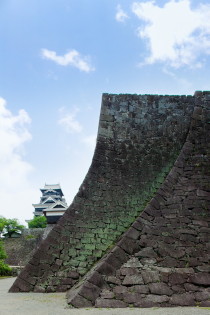
* Musha-Gaeshi is a device invented to prevent ninjas or external enemies from invading the castle during the time of war. The slopes of the stone fence are much steeper than the normal stone fence.
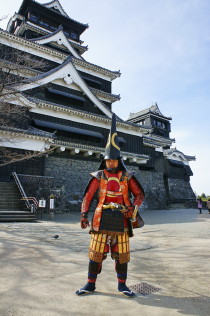

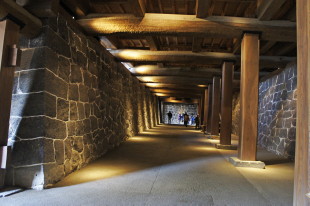
(above) * Honmaru Goten Palace is the building for the lord of the castle. He lived and managed the feudal clan affairs. There are some gorgeous rooms such as Shokun Hall, Wakamatsu Hall, O-Hiroma and so on. It is located next to the Main Castle Towers.
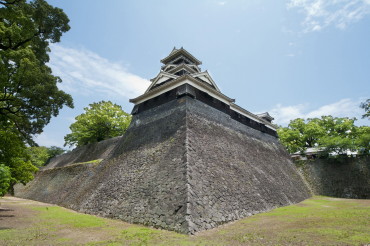
* Uto-Yagura is the only multistory yagura turret. It is called number 3 main castle tower. It has 5 stories and is comparable in size and scale to the main castle tower at many of the other castles.
(all photos above: by Kumamoto Prefecture)
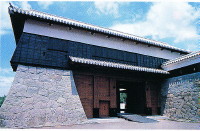
* Kumamoto Castle had three Ote-Gates or Main Gates. They were West, South and North Ote-Gate. (photo:West-Gate)
West Gate was primary gate among the gates. And South Ote- Gate was the largest one.
(photo: Kumamoto City)
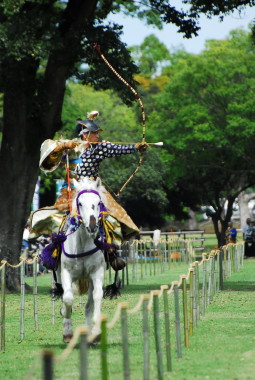
(above photo:The Society for the Preservation of
Takeda-ryu Yabusame)
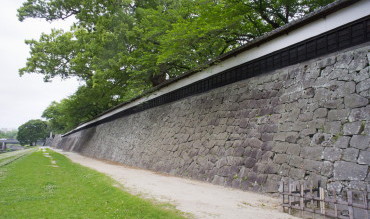
(photo: Kumamoto City)
* Naga-Bei (The Long Wall) has the beautiful contrast of black and white standing along the Tuboi River. The wall extends 242 metres. It is the longest of the castle wall remaining today.
During Autumn Castle Festival each year, erchers dressed as ancient samurai practice Yabusame and shoot arrows at targets while riding horseback on the dry riverbed in front of the wall.
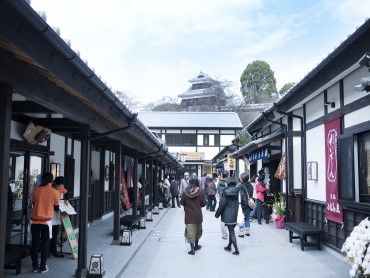
There is a popular sightseeing spot near Miyuki Bridge. It is called Sakura-no-Baba Jyosaien.
There are two facilities in it. One is Wakuwakuza where visitors can touch the history of Kumamoto. On the other hand, visitors can have Kumamoto's various kinds of food and souvenirs at Sakura-no-Kouji.
(photo: Kumamoto City)

(above photo: Kumamoto City)
In Kumamoto City, visitors can try some local delicacies such as horse meat, Kumamoto ramen, Karasi renkon, Taipi-en and so on. Additionally, many events are held throughout the year such as the Kumamoto Castle Festivals, Hino-kuni Festival, Fujisaki Hachimangu Shrine Autmn Festival and so on.

(photo: Kumamoto City)
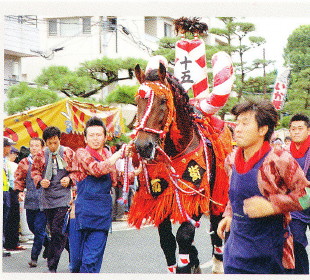
(photo: Fujisaki Hachimangu)
It is very easy to get to Kumamoto City either by JR Kyusyu Sinkansen train, highway bus and airplane.


